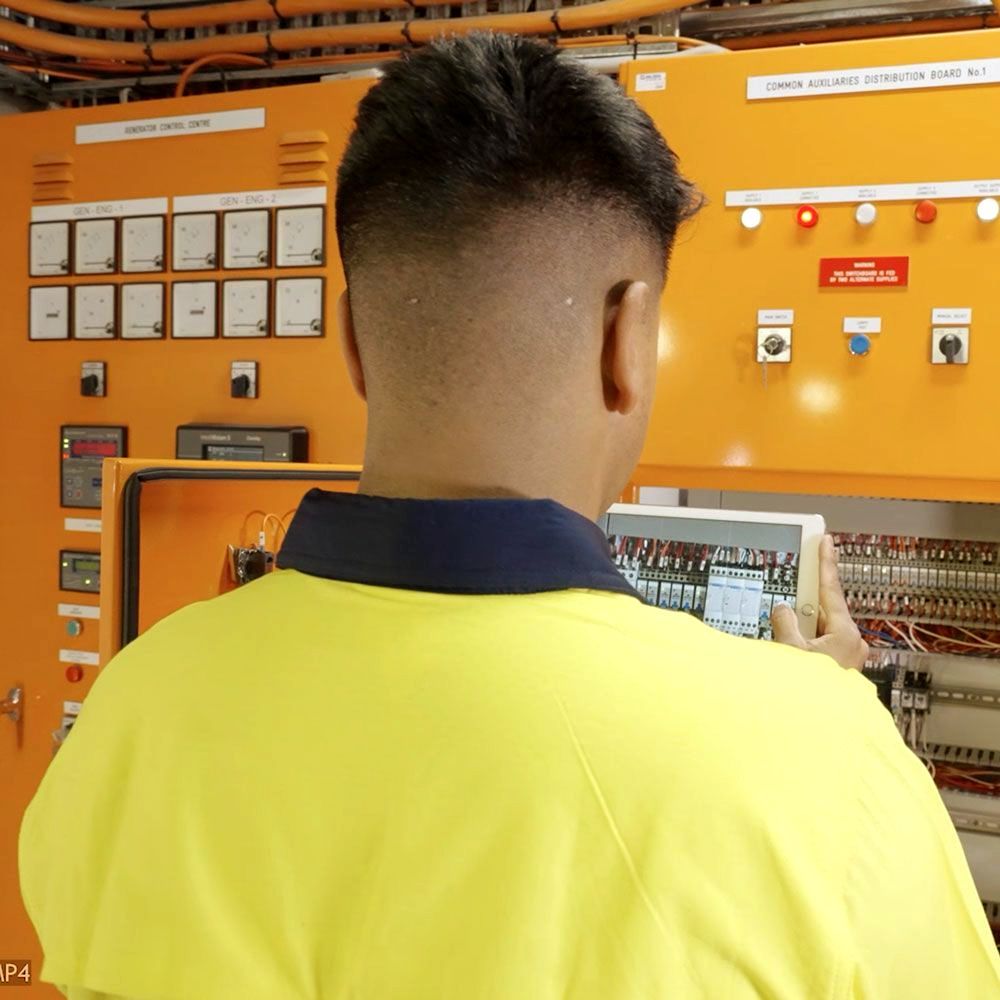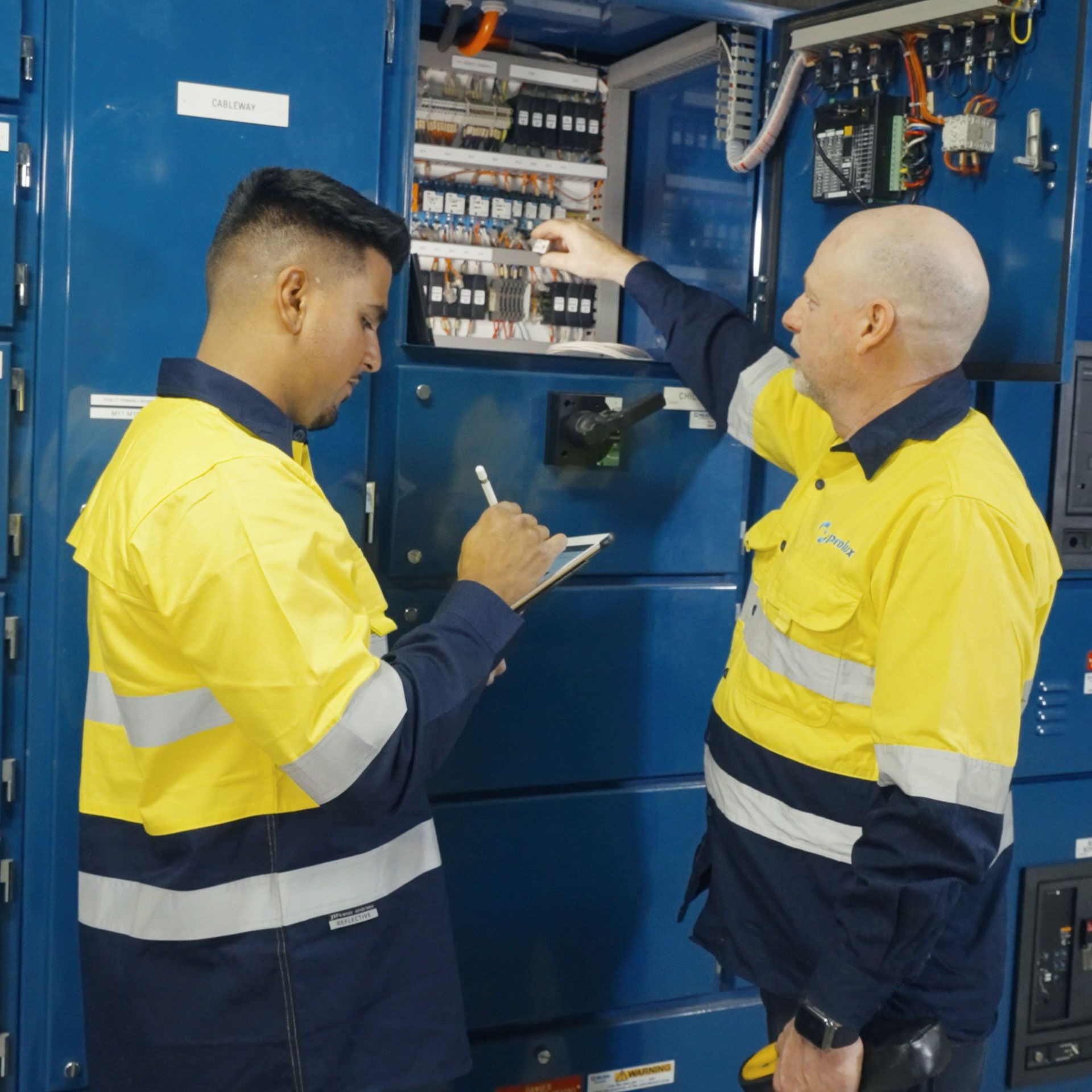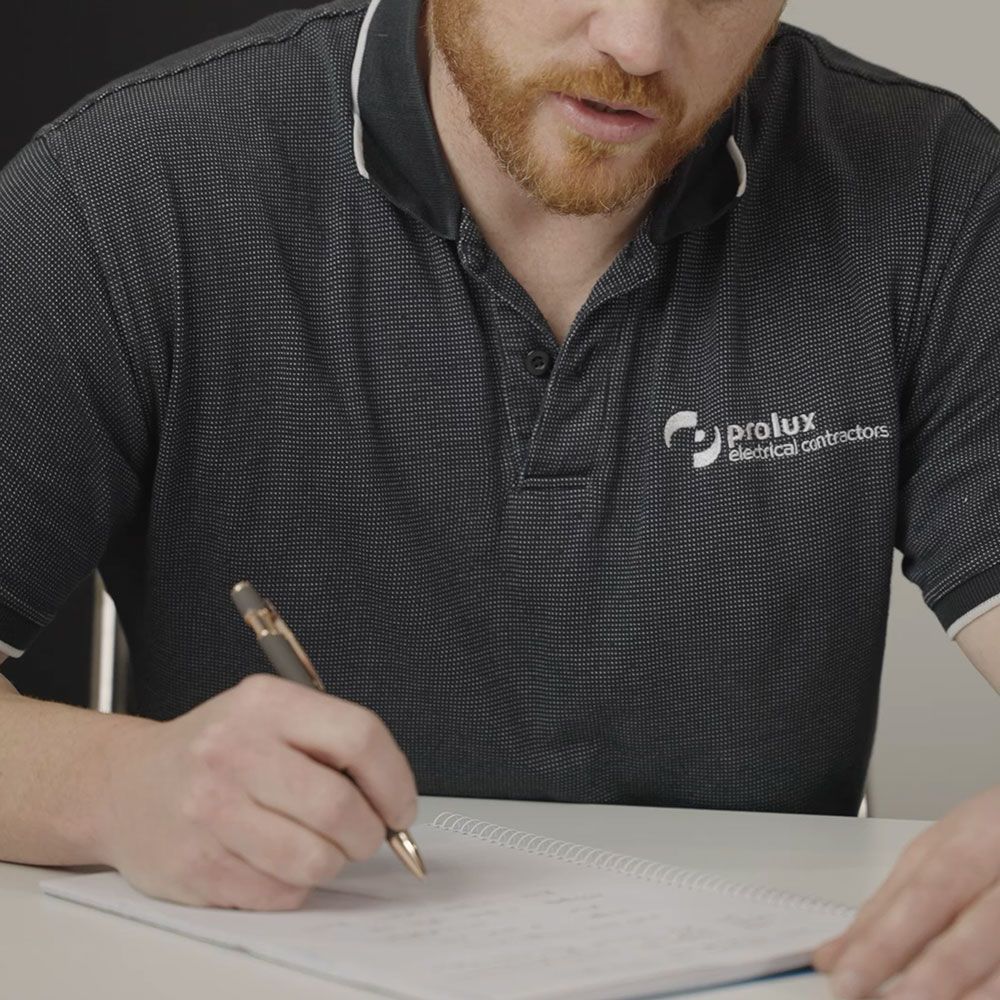Preventative Maintenance
Commercial | Retail | Infrastructure | Industrial | Government
RCD Testing
EV Charging Testing
Emergency and Exit Lighting
Lighting Control Systems
Power Factor Correction
Solar Maintenance
Thermal Imaging
Generator Maintenance
Air Circuit Breaker Maintenance
Main Switchboard Maintenance
CAPEX Audits
Preventative Maintenance for optimal performance
Experience top-tier Preventative Maintenance services with Prolux.
Our approach begins with a meticulous assessment of each property, crafting a bespoke twelve month maintenance plan irrespective of prior arrangements. In emergencies, our response is unrivaled in the industry, leveraging strategically located technicians for immediate on-site resolution.
24/7 RESPONSE CENTRE | DEDICATED PROJECT MANAGERS
Our comprehensive Electrical Maintenance services cover everything from fault diagnosis and test and tag to lightning protection testing and compliance inspections. We recognise that maintenance often unveils opportunities for upgrades. Transitioning aging structures into the 21st century attracts tenants and owners alike, with projects like motor control systems, UPS installations and energy-efficient upgrades becoming integral components.
Choose Prolux for proactive, efficient and cutting-edge Electrical Maintenance solutions, ensuring your building operates efficiently.
Efficiency | Safety | Innovation

Prolux consolidate periodic planned preventative maintenance to minimise disruption and streamline site services. The same group of technicians are scheduled for each property to strengthen relationships, build greater site knowledge and complete works efficiently and effectively.
A risk based approach
Health and Safety
We prioritise health and safety ensuring that all practices, processes and procedures exceed work health and safety standards.
Risk Management
We ensure project reliability and safety through continuous staff training, strict hazard procedures and high equipment standards.
Innovation and Sustainability
We lead in innovation and sustainability, integrating cutting-edge technologies and eco-friendly practices, underpinned by a robust Environmental Management Plan and a commitment to sustainable development.
Exceeding expectations on quality
We are dedicated to not only meet but exceed the expectations of our clients when it comes to quality. Through our focus on three key areas - Values, Skills, and Auditability - we have developed a systematic and values-driven approach to quality control. At Prolux, quality is more than an accreditation: it's an integral part of who we are and how we operate.
Excellence in Electrical Maintenance
The Benefits of working with Prolux
Sustainable Solutions
Embrace energy savings and sustainability through advanced technologies.
Budget Optimisation
Prioritise your CAPEX investment to maximise the value of every dollar spent.
Strategic Improvement
Invest in capital improvements that improve safety, reduce costs and enhance property value and rental yields.
Risk Mitigation
Proactively identify end-of-life electrical assets and mitigate risks with timely upgrades.
Long-Term Partnerships
Benefit from consultative approach that bolsters your strategic position.
Elevating the role of Facility Managers to future-proof your assets
The value of pre-emptive CAPEX auditing
Prolux take a unique approach to CAPEX auditing, ensuring Facility Managers not only preserve their budgets but also enhance their portfolio of properties with the latest in electrical innovation and sustainable technology.
With our eye always on the future, we help you identify potential upgrades, implement strategies that boost efficiency, improve safety, reduce downtime or increase rental yields. By choosing Prolux, you can leverage our expertise to help you make informed evidence-based decisions that align with your strategic goals.
We work with Facility Managers to optimise electrical assets with innovative solutions that pay dividends in safety, efficiency, and sustainability.

CAPEX Audit Case Studies
Emergency Lighting Upgrade - Cost Saving
Standalone Emergency and Exit Lighting Systems upgrade to new Wireless Mesh Systems within a portfolio of CBD office towers provided greater operational reliability, substantial maintenance savings, improved compliance and increased public safety.
The initiative delivering a 2.6 year return on investment for our client.
Power Quality Analysis - Energy Saving
On-site Power Quality Assessment identified low Power Factor, causing an increase in energy consumption.
Following installation of Power Factor Correction Units energy consumption decreased, saving over $9,000 in electricity and 12 tonnes of emissions annually.
E-Bike and Scooter Chargers - Risk Mitigation
Unattended E-Bike and Scooter charging stations within office towers posing high risk to property and personal damage, due to the increased risk of a battery fire.
To eliminate the risk four hour push button timers were installed on all charger outlets to prevent the charging of E-Bikes and Scooters when the buildings are unoccupied.
Plant Room Lighting - Efficiency Increase
Unoccupied plant rooms throughout CBD office towers were often switched on 24/7. Upon assessment of one building alone, over 60 lights totalling 1600 watts were on in unattended plant rooms. Installing timers wasn't a practical solution as the lights could potentially switch off when workers were in attendance.
The initiative was to install lockable key light switches in all plant rooms.
The key to control the switches was provided to the contractors when signing into the building. The switches had to be turned off and the key removed before the key could be returned.
The return on investment was less than 12 months.

The customer experience
Increased Productivity
We work with our clients to support and elevate their productivity by encouraging transparent communication around industry best practice.
Cost Reduction
Our dedication to productivity, efficiency, innovation and compliance provides the means by which our clients can reduce costs.
Efficiency
By focusing on the values, people and processes required to achieve maximum efficiency, we are able to minimise disruption to businesses.
Future Proof Technologies
We are committed to leading the way in pioneering new technologies and approaches. This focus on innovation empowers us to provide superior recommendations to our clients.
Simplified Compliance
We provide an end-to-end-service to meet and exceed regulatory requirements. Our processes are thorough to ensure all your compliance needs are met.




